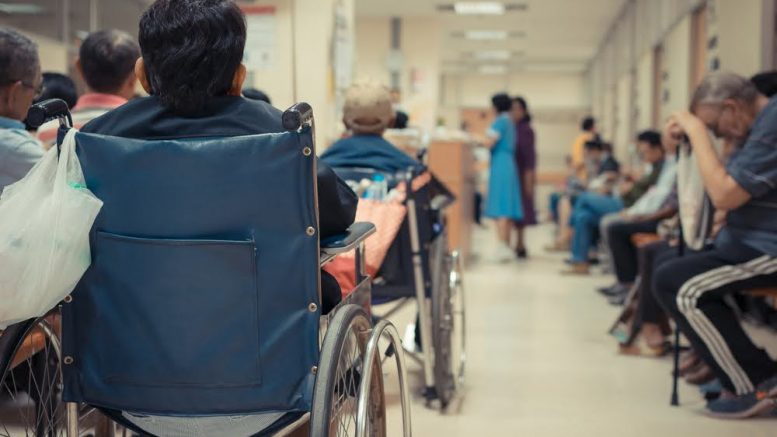Jill Ireland, the Chief Executive and Clinical Director of HomeLink Healthcare, welcomes NHS England’s early guidance on creating additional capacity and resilience this winter. Virtual wards will be an important part of the mix, and she argues commissioners should be looking to work with an expert partner to deliver them safely and effectively.
NHS England has just issued a ‘dear colleagues’ letter to advise managers on the steps they should be taking to increase the ‘capacity and operational resilience’ of services this winter.
The advice is not the winter plan with additional funding that everybody hopes will follow this autumn. Instead, it gives an early sight of some of the themes and actions that will be in the plan. The need for early action is a recognition of two, uncomfortable truths. The first is that pressure on the NHS has hardly let up since last winter.
As the letter acknowledges, health and care services have had to contend with further waves of Covid-19, an unprecedented heatwave, and record numbers of A&E attendances and urgent ambulance call outs this summer. The second is that pressure on the NHS this winter will continue to be ‘substantial’ as elective services try to recover after the Covid-19 pandemic in the face of a continuing surge in unmet demand.
Extra capacity means new commitment to virtual wards
From a provider perspective, it is really helpful to have this early sight of NHS England’s thinking. HomeLink Healthcare was set up to provide hospital at home services. Our services build long term capacity and deliver new models of care. As an agile organisation we are well placed to work with the NHS to respond to demand for at home services when health and care is under pressure.
However, commissioners tend to come to us and ask if we can provide additional capacity in weeks, rather than months. With more time, we can work with them to co-create new pathways that embed innovation, permanently increase capacity, and deliver a better service for patients.
A good example is setting up virtual wards. NHS England’s letter sets out eight areas for action, one of which is to ‘reduce hospital occupancy through increasing capacity by the equivalent of at least 7,000 general and acute beds.’ Some of these will be physical beds, but many more will be on virtual wards, because NHS England has already committed to a significant expansion in this way of working.
In April, it issued guidance to integrated care systems on the ‘enablers of success’ to support its ambition to deliver 40 to 50 virtual ward beds per 100,000 people in the population – or 24,000 virtual ward beds across the country by December 2023.
The guidance was useful because it clarified the virtual wards concept. It said virtual wards should be developed across systems, that they should be tech-enabled, so patients can be safely monitored via a digital platform by their clinical teams, and that they should include private partners where they can add value.
It also outlined that there is funding available to develop virtual wards over the next two years. So, if their roll-out can be facilitated and accelerated, it should help with pressure on the inpatient beds that are available this winter.
New pathways must be delivered safely and effectively
However, as the April guidance underlined, that roll-out has to be safe and effective; which is why we need time to plan carefully and mobilise effectively. The idea of virtual wards gained new impetus during the Covid-19 pandemic and now is the time to build on that work to create more sustainable, holistic models of care.
Collectively, we need to give the same care and attention to commissioning and delivering a virtual ward that we would give to commissioning and delivering any other service. That means governance is paramount.
There needs to be clear lines of clinical responsibility and accountability for patients. Patients need to be informed about the parameters. Monitoring needs linking to clear escalation points; and everybody involved needs to know what to do when they are reached.
HomeLink Healthcare is expert in this area because we have worked with the NHS to develop virtual wards since 2019. We worked with Norfolk and Norwich University Hospital NHS Foundation Trust (NNUHT) to create a new pathway for patients who needed IV therapy that could be safely delivered at home.
During the pandemic, the concept was expanded and developed to the point where the trust could take over the service. HomeLink Healthcare has been retained to provide hands-on, clinical care at home for the NNUHT Virtual Ward, while moving on to create virtual wards with other trusts in the region.
Time to plan means time to succeed
In our model, the virtual ward is an extension of the hospital and its governance structures. Its consultants retain responsibility for their patients. They determine the need for continuous or intermittent monitoring, and our expert, acute-trained clinical staff with community experience support that by delivering interventions at home, organising tests and providing hands-on care.
Commissioners that are looking to roll-out virtual wards this winter should consider NHS England’s advice to work with an expert partner. One that can provide sound advice, as well as the additional staff that the NHS can struggle to recruit and retain without the flexible working patterns and extended patient contact that the private sector can offer.
But however commissioners approach the challenge, they need to think through their need, work out where virtual ward can add most value, sort out the governance, mobilise carefully, and then prepare to build out to new areas.
That’s why I welcome NHS England’s ‘dear colleagues’ letter. It outlines the additional capacity that it thinks will be required this winter. It indicates where that capacity is going to come from. It renews the focus on virtual wards. And it gives commissioners and providers time to deliver those virtual wards in a way that is safe, effective, embeds innovation and, most importantly, delivers that better service for patients.





